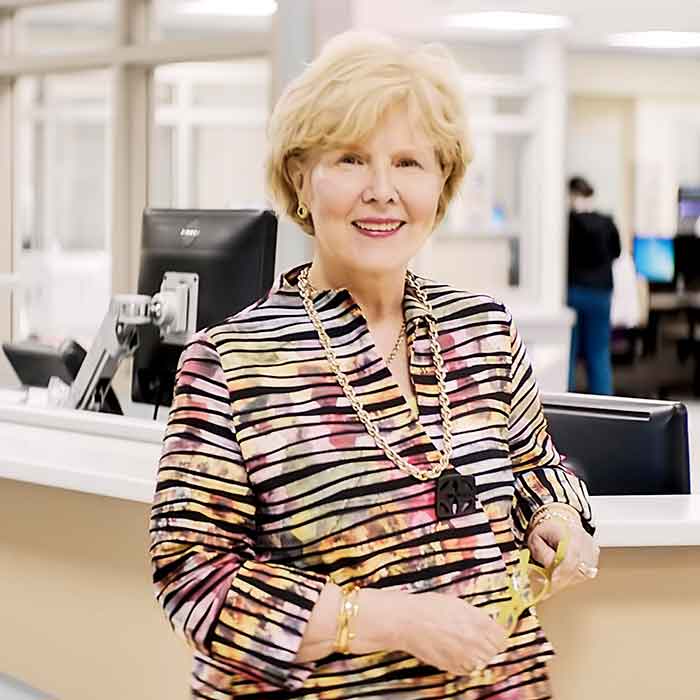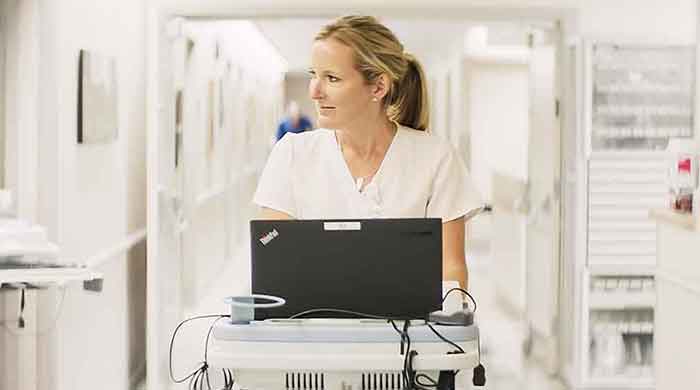No bounds. Better healthcare.
Putting patient safety at the core of care
Quality improvement in nursing through technology
The founder of modern nursing, Florence Nightingale, established the nurse’s role at the bedside, caring for the sick and wounded. Today’s nurse is fully "connected" and has a wide range of responsibilities including 24/7 assessments, monitoring, surveillance, and critical care1. In the US, nurses now comprise the largest single component of hospital staff and deliver most of the nation's long-term care, comprising of one of the largest segments of the US workforce as a whole.2 They are the front line in healthcare delivery. “They're the ones closest to the patient, delivering care 24 hours a day, seven days a week,” says Mary Jo LaPosta, MS, PhD, RN, Senior Vice President, Patient Care and Organizational Excellence, Chief Nursing Officer, Saratoga Hospital. “Because of their assessment skills and because of the data that they're exposed to, they're usually the first individual to understand the status of that patient.”
In the line of sight
Before the arrival of monitoring equipment and devices to communicate a patient’s condition with colleagues, nurses relied solely on "line of sight" – ensuring at all times they could see their patients, hear patient alarms, and quickly obtain help from critical care team colleagues if their condition deteriorated. “If you have five patients and you can look at them consistently, minute to minute, there is a level of comfort as a nurse,” says Ms. LaPosta. “As care delivery has changed we had to figure out how an individual somewhat isolated in a private room, not in a ward, can no longer be looked at by a nurse walking through the middle of the ward, we have to use technology that is helping us monitor those patients who aren't in our direct line of sight.” The gradual involvement of technology in their day-to-day patient care has led to nurses who are fully connected, highly trained, medical professionals and experts at information management, knowledge acquisition and distribution3.
Nursing as an economic driver
Creating a professional, technology-enabled nursing workforce has supported Saratoga Hospital’s continued recognition as a Magnet hospital, which recognizes health care organizations for quality patient care, nursing excellence and innovations in professional nursing practice. This role involves discussions with nurses, physicians and other clinicians about the types of investment the hospital can make to create an environment in which the best care is delivered. Frequently that investment is related to technology, LaPosta says. “As we've moved into a pay-for-performance environment, nursing is no longer being viewed as a cost center in care, but an economic driver of how hospitals get reimbursed because now hospitals - and healthcare in general - are getting reimbursed for delivering great services and a big part of that service is excellence in nursing care,” she says. “That means we have to put technology in the hands of our nurses to give better care for the patients they care for each day.”
Reducing document burden
Every patient room at Saratoga Hospital is equipped with the tools and technology that nurses need to take care of their patients and reduce the obstacles – looking for equipment, the burden of documentation – that may lie in their way. “It's becoming increasingly hard to be a nurse today,” she says. “Each day individuals come and they're not only required to give great care, but to document the care they deliver, and we're very concerned about the documentation burden that our nurses have.” “We want our nurses to spend more time looking at the data that comes out of assessing their patients than looking for equipment to make that assessment. We feel nurses' time is extremely valuable, we don't want to waste that time. And we really want to support our nurses in the higher order thinking that's required to give really good care to patients today.”
See how Saratoga Hospital
Reduced codes
on the ward.
It's not how many people you care for, but how well you care for those people.”
Mary Jo LaPosta
MS, PhD, RN, Senior Vice President, Patient Care and Organizational Excellence, Chief Nursing Officer

No bounds.
Better healthcare.
There's always a way to make life better.

DISCLAIMER: Results are specific to the institution where they were obtained and may not reflect the results achievable at other institutions. FOOTNOTES: 1 'Caution: Line-of-Sight in ICU Designs', Diane C. Bartos, University of San Francisco 2 American Association of Colleges of Nursing – Fact sheet - http://www.aacn.nche.edu/media-relations/fact-sheets/nursing-fact-sheet 3 Nursing World, ‘The Impact of Emerging Technology on Nursing Care: Warp Speed Ahead’, https://www.nursingworld.org/MainMenuCategories/ANAMarketplace/ANAPeriodicals/OJIN/TableofContents/Vol-18-2013/No2-May-2013/Impact-of-Emerging-Technology.html


